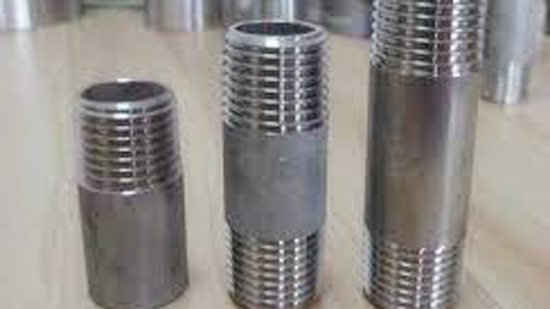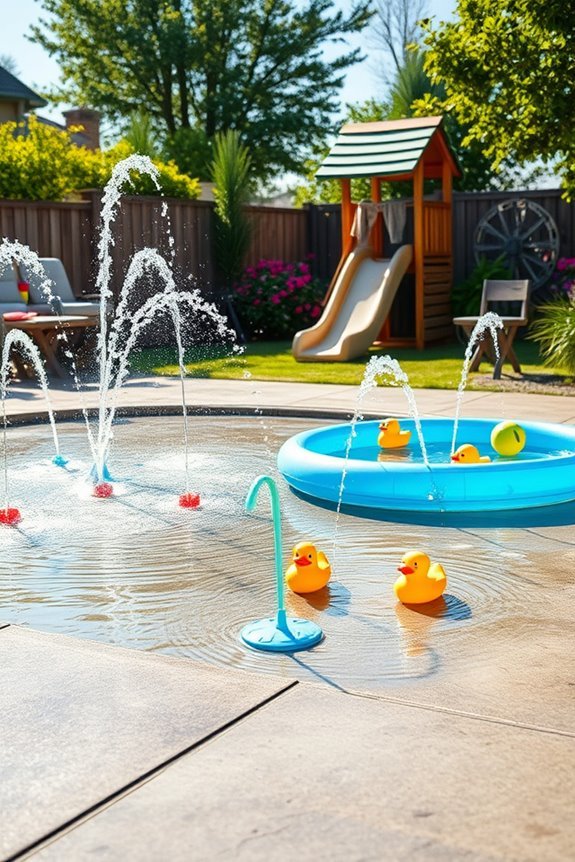What is a Plumbing Nipple: Essential Guide for Homeowners
A plumbing nipple is a short length of pipe with male threads on both ends, used to connect two female threaded fittings or pipes together. It is also referred to as a pipe nipple or a fitting nipple.
Plumbing nipples are an essential component in plumbing systems as they provide a secure and leak-proof connection between pipes and fittings. They come in various materials such as brass, stainless steel, and copper, and in different lengths and diameters to suit different plumbing applications.

Photo by epowermetals
Plumbing nipples are commonly used in household plumbing systems for connecting faucets, showerheads, and other fixtures. They are also used in industrial and commercial plumbing systems for connecting pipes and fittings in larger systems. Overall, plumbing nipples are an important component in plumbing systems as they ensure a secure and leak-free connection between pipes and fittings.
Plumbing Nipples
Plumbing nipples are small but essential components in the world of plumbing. They play a crucial role in connecting various pipes and fixtures, allowing for the seamless flow of water and other fluids within a plumbing system. In this section, we will delve into the defining features of plumbing nipples and explore their common uses in household plumbing.
Defining The Component
A plumbing nipple, also known as a pipe nipple, is a short piece of pipe with male threads on both ends. These threaded fittings are typically made of materials such as brass, copper, or stainless steel. Their length can vary to suit specific plumbing needs, and they come in a range of diameters to accommodate different pipe sizes.
Common Uses In Household Plumbing
- Connecting plumbing fixtures such as faucets, showerheads, and appliances to the water supply.
- Extending or joining sections of piping to create a continuous flow within the plumbing system.
- Adapting between different pipe sizes or types, ensuring compatibility and efficient fluid transfer.
- Facilitating repairs and maintenance by providing a secure and reliable connection point.
Types Of Plumbing Nipples
A plumbing nipple is a short piece of pipe with male threads on both ends. It is used to connect two female fittings together securely. Plumbing nipples come in various materials and sizes to suit different piping needs.
Material Variations
Plumbing nipples come in different materials like brass, stainless steel, and PVC.
Size And Diameter
Sizes range from 1/8 inch to 4 inches with various diameters to fit different 1/8 bend plumbing needs.
Thread Patterns
Plumbing nipples have thread patterns such as NPT, BSP, and metric for secure connections. Plumbing nipples, essential in piping systems, vary in material, size, diameter, and thread patterns. They come in brass, stainless steel, and PVC. Sizes range from 1/8 inch to 4 inches with various diameters. Thread patterns include NPT, BSP, and metric for secure connections.
There’s more to explore! Here’s another valuable read: How to Plumb a Pot Filler: Step-by-Step Guide for DIY Success
Nipples In Plumbing Systems
A plumbing nipple is a short piece of pipe that has male threads on both ends, used to connect two other fittings. It plays a crucial role in plumbing systems by allowing for the secure attachment of various components, such as pipes, valves, and fixtures.
Plumbing nipples are short pieces of pipe with male threads on both ends. They play a crucial role in connecting pipes, extending pipe length, and adapting different pipe sizes within plumbing systems.
Connection Of Pipes
Plumbing nipples are used to connect two pipes with female threads. They provide a secure and leak-resistant joint.
Extensions And Adaptations
Plumbing nipples can act as extensions to reach specific areas or as adapters to transition between different pipe sizes. In a plumbing system, the nipples are versatile components that facilitate the seamless flow of water or other fluids by ensuring proper connections and extensions.
Selecting The Right Plumbing Nipple
When it comes to plumbing, selecting the right plumbing nipple is crucial for ensuring a secure and leak-free connection. Plumbing nipples are short pieces of pipe with male threads on both ends, and they play a vital role in connecting two female fittings or pipes together. Here are some key factors to consider when selecting the right plumbing nipple.
Compatibility With Pipes
Ensure that the plumbing nipple is compatible with the pipes you are connecting. It’s essential to match the material, size, and thread type of the nipple with the pipes to achieve a secure and reliable connection.
Pressure Ratings
Check the pressure ratings of the plumbing nipple to ensure it can withstand the pressure requirements of your plumbing system. Select a nipple with a pressure rating that exceeds the maximum operating pressure of your system to prevent any potential leaks or failures.
Corrosion Resistance
Consider the corrosion resistance of the plumbing nipple, especially if it will be exposed to moisture or harsh chemicals. Opt for nipples made from corrosion-resistant materials such as stainless steel or brass to ensure longevity and reliability in various environmental conditions.
Installation Tips For Diy Enthusiasts
For DIY enthusiasts, understanding the installation process for plumbing nipples is essential for successful plumbing projects. Here are the crucial installation tips to ensure a seamless and leak-free plumbing system.
Preparation Steps
Before starting the installation, make sure to turn off the main water supply to avoid any accidents. Measure the length of the nipple required for your specific plumbing needs. Clean the threads of the pipes and the nipple to ensure a proper seal.
Tools Required
- Pipe wrench
- Teflon tape or pipe thread sealant
- Adjustable wrench
- Thread seal tape
Sealing And Tightening Techniques
When sealing the threads, use Teflon tape or pipe thread sealant to prevent leaks. Ensure the nipple is tightened securely using a pipe wrench. Avoid over-tightening to prevent damage to the threads.
Common Problems And Solutions
Leaks And Corrosion
Leaks and corrosion are common problems associated with plumbing nipples. Leakage can occur due to improper installation or damage to the nipple threads. Corrosion is often caused by exposure to water and can weaken the nipple, leading to potential leaks. Regular inspection and maintenance can help prevent these issues.
Cross-threading Issues
Cross-threading can occur when the threads of the nipple and the connecting pipes are not aligned properly during installation. This can lead to leaks and weakened connections. Ensuring proper alignment and applying appropriate torque during installation can help prevent cross-threading issues.
Removal Of Stuck Nipples
When a nipple becomes stuck due to corrosion or over-tightening, removal can be a challenging task. Applying penetrating oil and using a pipe wrench or a nipple extractor tool can help to loosen and remove the stuck nipple without causing damage to the surrounding pipes.
Maintenance And Replacement
Regular inspection is crucial for the upkeep of plumbing nipples. Inspect the nipples for any signs of corrosion, leaks, or damage. Look for any rust or discoloration, and check for loose connections. Identify any potential issues early on to prevent more significant problems down the line.
When To Replace
Plumbing nipples should be replaced if there are signs of corrosion, leakage, or damage. If you notice rust or discoloration, it’s time to consider a replacement. Address any loose connections promptly. Additionally, if the nipples are worn or deteriorating, it’s advisable to replace them to avoid potential failures.
Upgrading Plumbing Nipples
Consider upgrading plumbing nipples to more durable materials such as brass or stainless steel. These materials offer enhanced resistance to corrosion and can prolong the lifespan of your plumbing system. Upgrading to high-quality nipples can also improve the overall reliability and performance of your plumbing system.
Professional Insights
Professional Insights: Understanding the role of a plumbing nipple is crucial in the world of plumbing. These small but essential fittings play a significant part in connecting various pipes and fixtures.
Hiring A Plumber
A skilled plumber is vital for correctly installing and using plumbing nipples. Make sure to hire a licensed professional with experience in handling such fittings to avoid any leaks or issues.
Advanced Applications
Plumbing nipples are not just for basic connections. They are also used in complex systems such as in heating systems, industrial machinery, and specialized piping setups.
Code Compliance
To ensure safety and quality, it’s essential to adhere to building codes when using plumbing nipples. Always consult with your plumber to guarantee compliance with all regulations.
Conclusion
Understanding the role of a plumbing nipple is crucial for plumbing systems. The blog has shed light on its function, types, and installation process. By grasping this concept, individuals can enhance their plumbing knowledge and tackle minor plumbing issues effectively.


